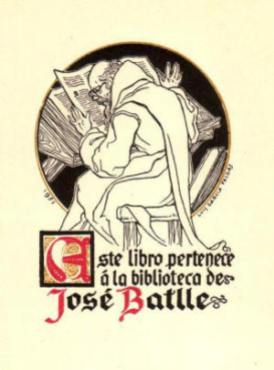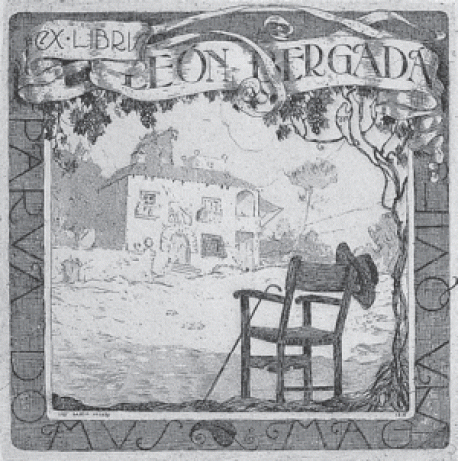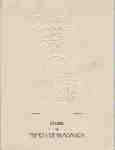Ex Libris «Festina Lente»
Aldo Manuzio V Centenary

Festina Lente, C3/C5/Die Cutting/Gold Leaf Collage, 2015
As I have written before Elena Hlodec ex libris creations are unique in as much as they are always preceded by a thorough research and reflection of the theme and of the commissioner’s wishes, bearing in mind the final purpose of the ex libris and its connection with books.
The outcome of the final print also derives from the empathy established between the Artist and the ex libris owner, the Aldo Manuzio Ex Libris – «Festina Lente» – being a good example.
The ex libris made by Elena Hlodec for the International Contest of Ex Libris summoned by Associazione Culturale Unitas Onlus and the Comune di Bassiano to commemorate the V Centenary of Aldo Manuzio death under the theme “Aldo Manuzio from in folio to pocket book. Life and works of the first modern editor. The Ex Libris describe and illustrate” is an absolutely stunning and beautiful print.
The whole conception is an extraordinary achievement interpreting the theme in an original manner, considering that the Artist accomplished the evocation of Aldo Manuzio – as an innovator in the art of printing, as a printer of the classics and as a scholar (namely with his Logo or Emblem) – combined with an allusion to Dante’s Divina Comedia and its full meaning, evoking central ideas of Man, both in Purgatory and Paradise.
As in all her ex libris, one can sense that the final engraving owes much to meditation on the theme and introspection, the Artist working with several sketches till reaching a satisfactory result, before the engraving and printing stages.
Particularly appealing are the ideas expressed in the ex libris central axis «…the angel in the middle reflecting by his stillness the primordial meditation» and «the body representing Man the center of the Universe» pointing both to Pico de la Mirandola and to the Universe in Dante’s Paradise, meaning the structure of a star that transforms into the body and vice versa, unveiled like in first chant of Purgatory when it says to peel off the body to reveal the soul», in the Artist’s own words.
Then, on the left a reminder of Aldo Manuzio’s primordial activity as a printer: «one page of Manuzio’s editions, transmuting the works of the great Greek philosophers into a printed page where Dante was published also with great respect». The «rope and the laurels» is an allusion to Dante, closing the drawing on the right, in a harmonious composition.
Also a further connection between Manuzio and Dante expressed through their portraits (and the Angel) in «dialogue with the silhouettes of the Greek scholars», edited by the former.
The tail of the dolphin transformed, in order to inscribe the mandatory phrase of Manuzio’s centenary bookplate contest and the name of the ex libris owner in the anchor is also very ingenious, without perturbing the whole composition, but again rather in harmony with the whole composition.
The Artist has reasons to feel extremely proud of this work, since it is very impressive, revealing an intelligent, original and highly aesthetic interpretation of this complex theme, having tackled it with superb artistic mastery and denoting inspiration, knowledge, culture and creative powers, qualities which make Elena Hlodec an outstanding Creator, and may I add – a Poet of the pencil and the burin.
For all these reasons, the award by the Jury of the 1st Prize for an International Artist in the above mentioned Contest is not surprising and the Artist deserved it with high merit.
The techniques used were etching and mezzotint with the exquisite gold leaf added to the anchor.
Finally, my association with this superb ex libris honours me and I am happy to use this ex libris in my Library ennobling the editions of the Classics.
José Vicente de Bragança

























 KAMACHI SEIJI is an outstanding Japanese graphic artist who has engraved, since 1980, about 100 ex libris mostly using the etching technique.
KAMACHI SEIJI is an outstanding Japanese graphic artist who has engraved, since 1980, about 100 ex libris mostly using the etching technique.






























































